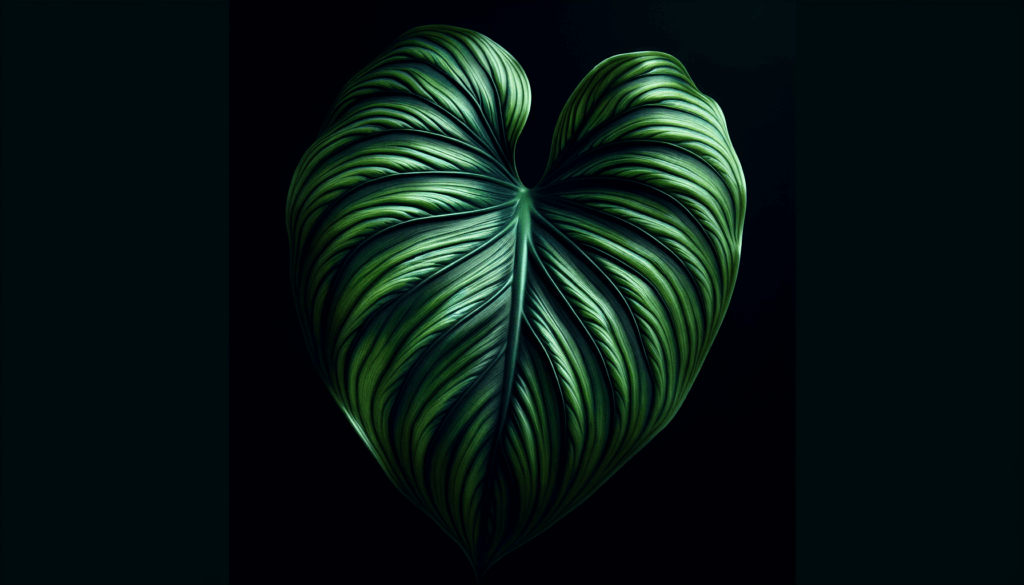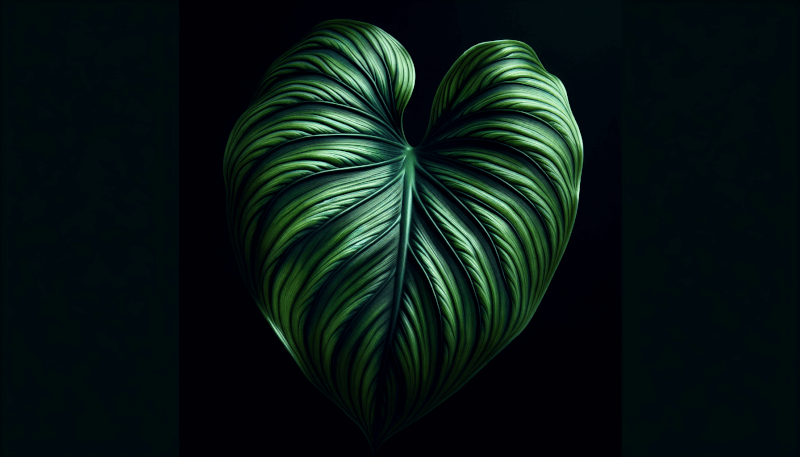Are you interested in adding a touch of natural beauty to your home or office? Look no further than the Anubias plant. With its lush green leaves and hardy nature, the Anubias is the perfect addition to any indoor or outdoor space. In this article, we will explore the basics of Anubias plant care, including the ideal growing conditions, watering and fertilizing tips, and common troubleshooting techniques. Whether you’re a seasoned plant enthusiast or just starting your green thumb journey, this guide will provide you with all the information you need to help your Anubias thrive.

Choosing the Right Anubias Plant
When choosing an Anubias plant for your aquarium, there are a few factors to consider. One important aspect is the size of the plant. Anubias plants come in various sizes, ranging from small to large. Depending on the size of your tank and the desired aesthetic, you can select an Anubias plant that fits well within your aquatic landscape.
Another factor to consider is the leaf color of the Anubias plant. The leaves can vary in color, with popular options being green or variegated. Choose a color that complements the overall look of your aquarium and enhances its visual appeal.
Inspecting the roots of the Anubias plant is also crucial. Healthy roots are vital for the plant’s overall well-being and growth. Look for plants with well-developed and firm roots, as these indicate a healthy plant that is more likely to thrive in your tank.
Lastly, make it a point to inquire about the plant’s origin. It is essential to ensure that the Anubias plant you choose was cultivated in appropriate conditions and is free from any potential pests or diseases. This will help prevent any unwanted issues in your aquarium.
Preparing the Tank for Anubias
Before adding Anubias plants to your aquarium, it is crucial to prepare the tank adequately. The following steps will help create the ideal environment for these plants to thrive.
Selecting an appropriate tank size is vital for the well-being of your Anubias plants. Consider the size of your desired Anubias species and ensure that your tank can accommodate their growth. An overcrowded tank can hinder plant growth and may lead to unhealthy conditions for both the plants and other tank inhabitants.
Choosing a suitable substrate is essential for successful Anubias plant care. Anubias plants are root feeders, so it is advisable to use a substrate that allows their roots to anchor securely. Some options include gravel, sand, or specialized aquarium planting substrates.
Providing adequate lighting is crucial for the growth of Anubias plants. These plants thrive in moderate to low light conditions. Ensure that your aquarium has appropriate lighting fixtures and bulbs that emit the right spectrum of light for optimal plant growth.
Maintaining optimal water parameters is essential for the well-being of Anubias plants. They prefer slightly acidic to neutral water conditions, with a pH range of 6.0 to 7.5. Additionally, maintaining appropriate temperature, hardness, and water circulation will contribute to the overall health and growth of your Anubias plants.
Planting Anubias
Once your tank is prepared, it’s time to plant your Anubias. Follow these guidelines for successful planting and optimal growth.
When attaching Anubias plants to hardscape items, such as rocks or driftwood, use fishing line or cotton thread to secure them in place. This will ensure that the plants remain fixed and stable while their roots grow and establish a strong hold.
When planting Anubias, it is crucial not to bury the rhizome. The rhizome is the thick stem-like structure from which the leaves and roots of the plant grow. Burying it can lead to rot and potentially kill the plant. Instead, allow the rhizome to lay on top of the substrate, with the roots anchoring it in place.
Proper spacing of the Anubias plants is essential for their healthy growth. Ensure that there is sufficient space between each plant to allow for adequate light penetration and airflow. This will prevent the plants from competing for nutrients and reduce the risk of overcrowding.
Consider the placement of your tank when planting Anubias. It is advisable to position the tank away from direct sunlight to avoid algae growth. Additionally, selecting a suitable location will allow you to enjoy the beauty of the plants while minimizing any potential disruption to their growth.
Watering and Moisture Requirements
Anubias plants have specific watering and moisture requirements to maintain their health and vitality. Follow these guidelines for proper care:
Avoid overwatering your Anubias plants as excessive moisture can lead to root rot and other issues. Allow the top layer of the substrate to dry slightly between watering. This will prevent the plant from suffocating and promote healthy root growth.
Maintain consistent moisture levels in the tank by monitoring the substrate’s moisture content. Anubias plants prefer moist conditions but can suffer if the substrate becomes waterlogged. Strike a balance by ensuring sufficient moisture without creating a waterlogged environment.
Monitoring humidity levels is essential, especially if you have a tightly sealed aquarium. Anubias plants thrive in moderate humidity conditions, so ensure the tank has adequate ventilation to prevent excessive humidity buildup.
Avoid letting your Anubias plants dry out. These plants are not adapted to survive long periods of drought, and allowing them to completely dry out can lead to irreversible damage. Keep a close eye on their moisture levels and provide a suitable environment to prevent drying.
Lighting Requirements for Anubias
Proper lighting is crucial for the healthy growth of Anubias plants. Consider the following factors to ensure optimal lighting conditions:
Anubias plants thrive in moderate to low light conditions. Excessive, intense direct sunlight should be avoided, as it can lead to algae growth and damage the plants. Provide diffused or filtered light to prevent any adverse effects.
Choosing a suitable light spectrum is essential for the photosynthesis process in Anubias plants. Opt for bulbs that emit light within the blue and red spectrums, as these are wavelengths of light that plants utilize most efficiently for photosynthesis.
Consider the photoperiod or the duration of lighting your Anubias plants receive daily. A photoperiod of 8-12 hours is typically suitable for most Anubias species. Maintaining a consistent lighting schedule will help promote healthy growth and establish a natural rhythm for your plants.
Nutrient Requirements for Healthy Growth
To ensure the healthy growth of Anubias plants, it is crucial to provide them with the necessary nutrients. Consider the following:
Sufficient iron levels are essential for the proper growth and development of Anubias plants. Iron is a vital micronutrient that contributes to the plants’ ability to produce chlorophyll and carry out essential metabolic processes. Use iron supplements if needed to maintain adequate iron levels in the tank.
In addition to iron, Anubias plants require essential macro and micronutrients for healthy growth. Nitrogen, phosphorus, and potassium are macro nutrients that plants need in larger quantities, while calcium, magnesium, and trace elements are essential micronutrients. Ensure that your tank provides these nutrients through fish waste, fertilizers, or specialized plant supplements.
Consider using liquid or substrate fertilization methods to provide additional nutrients for your Anubias plants. Liquid fertilizers are typically added to the water column, while substrate fertilizers are buried beneath the substrate. Assess the needs of your plants and select the appropriate fertilization method to support their growth.
Monitor your Anubias plants for any signs of nutrient deficiencies, such as yellowing leaves, stunted growth, or poor overall health. Adjust the nutrient levels accordingly to ensure that your plants receive the necessary nutrients for healthy growth.
Maintenance and Pruning
Regular maintenance and pruning are essential for the overall health and appearance of your Anubias plants. Follow these guidelines:
Remove yellowed or damaged leaves as they can negatively impact the plant’s overall health and appearance. Use clean, sterilized scissors or pruning shears to carefully trim away any affected foliage. This will promote new growth and help maintain the plant’s vitality.
Trim overgrown Anubias plants to prevent them from overshadowing other plants or restricting water flow in the tank. Prune back any excessive foliage, making sure to leave enough leaves for the plant to sustain itself. Regular trimming will help maintain a neat and tidy appearance as well as prevent overcrowding.
To prevent algae growth on Anubias leaves, it is crucial to maintain optimal water conditions. Keep the tank clean by regularly removing debris, performing water changes, and maintaining appropriate filtration. Algae growth can hinder the plants’ ability to photosynthesize and compete for nutrients, so it is important to address any algae issues promptly.
Regularly clean both the Anubias plants and the tank to maintain a healthy environment. Gently wipe the leaves to remove any dust or algae buildup, taking care not to damage the plants or disturb their roots. Cleaning the tank will reduce the risk of disease and promote a clean and visually appealing aquarium.
Dealing with Pests and Diseases
Pests and diseases can pose a threat to the health and well-being of your Anubias plants. Take these measures to prevent and address potential issues:
Watch out for snail infestations in your aquarium, as snails can damage Anubias leaves and feed on the plants. Regularly inspect your plants for snails and take appropriate measures to remove them. Manual removal is often effective, and introducing natural predators like Assassin snails can help control snail populations.
Treat bacterial or fungal infections promptly to prevent their spread to healthy Anubias plants. If you notice signs of infection, such as discoloration, rot, or lesions, quarantine affected plants and treat them accordingly. Use appropriate medications, follow the instructions carefully, and monitor the plants closely during the treatment process.
Prevent leaf spotting by providing optimal growing conditions for your Anubias plants. Leaf spots can be caused by several factors, including inadequate lighting, nutrient deficiencies, or poor water quality. Address the underlying causes to prevent further leaf damage and promote overall plant health.
Avoid algae overgrowth by employing proper tank maintenance practices and providing optimal growing conditions for the Anubias plants. Algae growth can compete with the plants for nutrients and light, hampering their growth. Regularly monitor and address any algae issues to ensure the well-being of your Anubias plants.
Compatible Tank Mates for Anubias
Choosing suitable tank mates for your Anubias plants is crucial to maintain a harmonious aquarium ecosystem. Consider the following when selecting tank mates:
Choose peaceful and non-destructive fish species that won’t damage or uproot your Anubias plants. Avoid species known for their aggressive behavior or those that tend to dig in the substrate.
Consider shrimp and snail species as potential tank mates for Anubias plants. Many shrimp species help clean the tank and eat algae, while snails can be beneficial in terms of algae control. Just ensure that the shrimp or snails are not aggressive towards the plants.
Avoid herbivorous fish species that have a tendency to nibble on plants. Anubias leaves can be tempting for herbivorous fish, and their constant grazing can damage the plant’s health and diminish its aesthetic appeal.
Research tank compatibility before introducing new tank mates to your Anubias aquarium. Some fish species may have specific requirements or behaviors that can affect the well-being of your plants. Consider factors such as water parameters, aggression levels, and feeding habits to ensure a suitable match.
Propagation and Reproduction
Anubias plants can be propagated and reproduced through various methods. Use these techniques to expand your Anubias collection:
Separate the rhizome and roots to propagate Anubias plants. Carefully cut the rhizome into sections, ensuring that each section has healthy roots and leaves. Plant these sections individually, allowing each to develop into a new plant.
Divide clumps of Anubias plants to create multiple plants from a single specimen. Gently separate the rhizomes and roots, ensuring that each division has sufficient roots and leaves. Plant the divisions individually, providing optimal growing conditions for each.
Attach plantlets to the substrate to propagate Anubias plants. Plantlets are small plant formations that develop on the mother plant’s leaves. Once they have developed roots, carefully detach them from the mother plant and secure them to the substrate using fishing line or cotton thread.
Allow sufficient time for growth after propagation. New plants may require some adjustment to their new environment, and it may take some time for them to establish themselves. Monitor their progress closely and provide the necessary care for successful growth.
By following these guidelines, you can ensure the successful care and cultivation of Anubias plants in your aquarium. With proper attention to their needs and suitable tank conditions, Anubias plants will thrive and enhance the beauty of your aquatic ecosystem.


